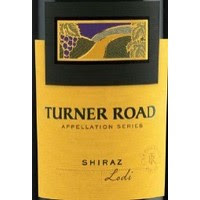
As so many other families, my family has a traditional way of cooking our Thanksgiving turkey. It’s cooked on the grill and basted in red wine. It amazes me how many people never thought to cook a turkey on the grill. It’s a great way to reduce the amount of heat the oven puts out, especially here in Florida, and if you’re the one tending to the bird, gives you just a little bit of alone time. It’s just you, the bird and a bottle of wine.
We don’t use any particular wine, just something on the dry side and make sure you get enough for the basting of the bird as well as a few glasses for yourself. It’s really an easy process, put the turkey in a roasting pan, get the coals or gas up to temperature, pour enough wine in the pan to cover the bottom plus some additional to use for basting, close the lid and check back in about twenty minutes to baste. I’m not truly convinced the constant basting keeps the turkey any moister than if you didn’t baste that often but it does give you a few moments to clear your head. Let the turkey get to the appropriate cooking temperature and voila! Drunken Bird.
Speaking of Thanksgiving and wine, this is a great time to open a bottle of Beaujolais Nouveau. Since the wine may have experienced a little bottle shock, the additional week allowing the wine to settle may bring out some additional flavors that were not detected on last weeks release date.
When picking a wine for Thanksgiving you want to think about the side dishes you will be serving since these have the more complex flavors, textures and aromas. I prefer something a little on the light side like a Pinot Noir or Zinfandel, a big, bold Cabernet or Merlot may be just a little too heavy for this meal. A Sauvignon Blanc or Pinot Grigio is a good choice for white wine lovers. Sparkling wine is also a great choice and can be a phenomenal in food pairing.
How ever you choose to spend your Thanksgiving, take some time to reflect on all the wonderful things, big or small, you have to be thankful for in your life. Have a happy Thanksgiving.
2009© Kellie Stargaard. All Rights Reserved.
http://winechicksguidetoeverydaywines.blogspot.com/
Follow me on:
Facebook:http://www.facebook.com/home.php#/group.php?gid=114185461044&ref=ts
Twitter:http://twitter.com/WineChicksGuide
We don’t use any particular wine, just something on the dry side and make sure you get enough for the basting of the bird as well as a few glasses for yourself. It’s really an easy process, put the turkey in a roasting pan, get the coals or gas up to temperature, pour enough wine in the pan to cover the bottom plus some additional to use for basting, close the lid and check back in about twenty minutes to baste. I’m not truly convinced the constant basting keeps the turkey any moister than if you didn’t baste that often but it does give you a few moments to clear your head. Let the turkey get to the appropriate cooking temperature and voila! Drunken Bird.
Speaking of Thanksgiving and wine, this is a great time to open a bottle of Beaujolais Nouveau. Since the wine may have experienced a little bottle shock, the additional week allowing the wine to settle may bring out some additional flavors that were not detected on last weeks release date.
When picking a wine for Thanksgiving you want to think about the side dishes you will be serving since these have the more complex flavors, textures and aromas. I prefer something a little on the light side like a Pinot Noir or Zinfandel, a big, bold Cabernet or Merlot may be just a little too heavy for this meal. A Sauvignon Blanc or Pinot Grigio is a good choice for white wine lovers. Sparkling wine is also a great choice and can be a phenomenal in food pairing.
How ever you choose to spend your Thanksgiving, take some time to reflect on all the wonderful things, big or small, you have to be thankful for in your life. Have a happy Thanksgiving.
2009© Kellie Stargaard. All Rights Reserved.
http://winechicksguidetoeverydaywines.blogspot.com/
Follow me on:
Facebook:http://www.facebook.com/home.php#/group.php?gid=114185461044&ref=ts
Twitter:http://twitter.com/WineChicksGuide









